An Interview with RKC Team Leader Lori Crock
by Adrienne Harvey, SrPCC, RKC-II, CK-FMS, Primal Move Nat'l Instructor
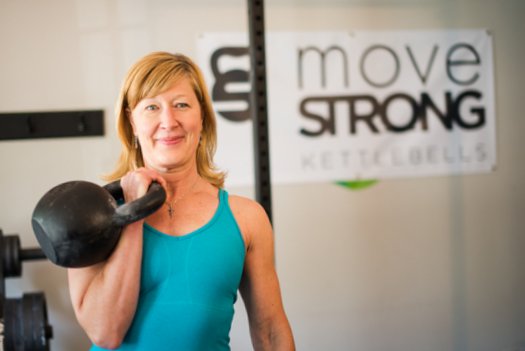
Dragon Door: How were you first introduced to kettlebells?
Lori Crock: In 2010, my husband and I started working with a personal trainer. Oddly enough, I didn’t like kettlebells at first! The kettlebell swing was a very unfamiliar movement, and I didn’t understand it. But I became intrigued by kettlebells because until then, I’d liked everything else in the gym. I wouldn't say the swing is my absolute favorite kettlebell movement, but I love it now.
I liked that kettlebells helped me discover my posterior chain. Even though I’d been a runner and swimmer in my youth, I had never thought about power from the glutes and lats. I was intrigued by how much I didn't understand, and how I had so much weakness even after a lifetime of being active. I started using the kettlebell concepts with everything—including barbells and
bodyweight exercises. I learned about kettlebells in 2010 and went to the
RKC in 2013.
Dragon Door: What is your athletic background?
Lori Crock: In my teens, I was a competitive swimmer and made it to the Junior National level. I didn't continue swimming in college because I wanted to focus on academics and explore other fitness disciplines. So, I ran for pleasure instead of competing. I continued to run and lift weights throughout my adult life.
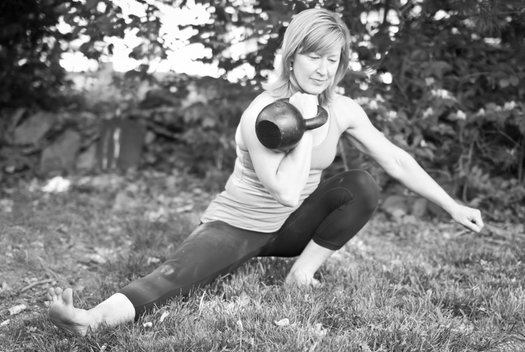
Dragon Door: How did you decide to work in fitness?
Lori Crock: I’d never really considered fitness as a full time profession until I started working with a couple of fitness companies as a marketing communicator. While I was intrigued by the fitness industry, I couldn’t imagine leaving marketing. I love to write, and love working with entrepreneurs in a marketing role. I never dreamed I'd be doing fitness full time.
But life has twists and turns, and when I was working with MovNat, LLC, they started a certification program. Since I was their marketing person, I went to one of their first certification workshops in 2012. After the workshop—and on faith alone—I immediately shut down my marketing practice, found a space and opened a gym! It just seemed like what I had to do full time. MovNat also led me to the
Functional Movement Screen (FMS).
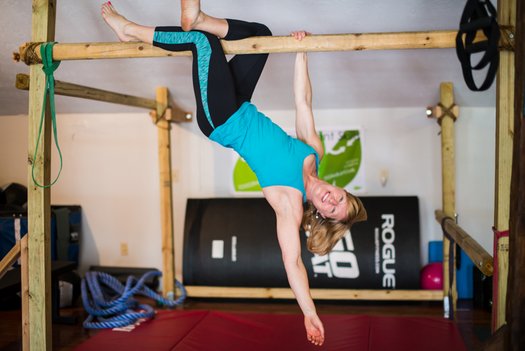
Right after I was certified as a MovNat instructor in June of 2012, I started to prepare for the RKC on my own. I didn't have a coach, although I did visit a
local RKC instructor for some private training a couple of times. I just worked with a
10kg kettlebell, and tried to work up to the snatch test with a
12kg kettlebell to meet the testing requirement for my age group. I prepared for the RKC over a period of six months, and attended the workshop in Columbus, Ohio in May of 2013.
Dragon Door: At the RKC workshop, were there any surprises since you trained yourself?
Lori Crock: It was an incredible experience, and the content was so much deeper and richer than I had expected.
Andrea Du Cane taught my workshop and her background with movement added to the overwhelmingly wonderful experience. I immediately knew that I would want to pursue the RKC-II because the information was important. There was so much I could take back to my clients. The RKC has made me a better coach.
I had trained for the snatch test and was comfortable with it, so that wasn’t an issue at the RKC certification. But I was surprised to discover—and this is one of the disadvantages of training yourself—that I was hiking up my shoulder on the right side during cleans! My team leader was also surprised because I was doing really well with everything else. At first I panicked because it seemed ingrained in my muscle memory, and I didn’t know if I could fix it in a weekend. But, the instructors and my team leader patiently worked with me. We even went outside and worked one-on-one for a little while, so I was able to calm down and focus. And when I was able to get that shoulder to stop hiking and the trap to calm down, I was able to pass. I went home with much better form and a better understanding of how to teach the clean.
I was also surprised by all the nuances of the Turkish get-up, which is my favorite kettlebell movement. It was exciting to bring back all those cues and learn how to become a better coach.
Dragon Door: What do you like about the get-up?
Lori Crock: I like how it helps people become more mobile, opens their hips, teaches them to use their lats, and challenges them mentally. The movement is useful in daily life for everyone and can bring greater grace, ease, and power. One of my associates, a physical therapist, has started using parts of it (without weight) with his patients. I have seen many people in the medical community become fascinated with it. Some have even come to class to learn more about it, and how to use parts of it with their patients as well. I feel like the get-up is applicable to everyone at any fitness level and at any age.
The RKC was pretty life changing for me; in fact I came back and rebranded my gym as a kettlebell gym the following October. I also changed from personal training to an unlimited small group class format. I saw that I could build a business for all ages and fitness levels with kettlebells.
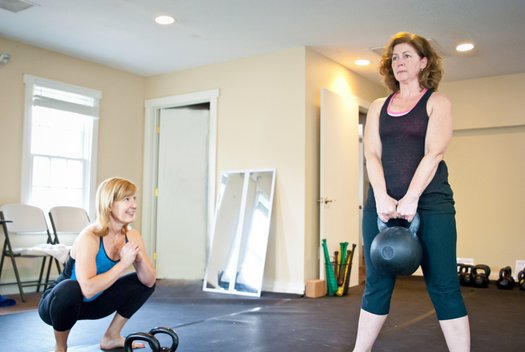
I also discovered that there’s a social component to kettlebell training. Kettlebells bring people together—because kettlebells are simple, portable, and easily lend themselves to a small, collaborative class atmosphere. The social aspect is so important because it keeps people training. Even though it was risky to change my gym name and focus, it was a really good decision. Ever since, the business has been growing and impacting people's lives in many more ways than I can share here.
Dragon Door: Who do you usually train?
Lori Crock: Mostly people in their 30s to 60s, and a lot of desk-sitters! A few of my clients work in the medical field. With kettlebell training, you have to use your brain, so it seems to attract people who want to use their brain in physical training too. We’re never just moving mindlessly; I compare learning to use kettlebells to learning a new skill, such as golf or skiing.
People with no specific fitness goals have told me that they're sleeping better and have more energy. Sometimes they lose weight too, even though that’s not the usual goal at our gym. Many clients are also happy to report that they’re better able to play with their kids, and are not hesitating to try new things in the rest of their lives. It has been a very positive experience for all of us.
I also work with city employees and police officers. The police officers were a little hesitant at first, because they were not sure if the workout would be intense enough for them. But if you ask any of them now, they will say it’s definitely enough! The city employees are between the ages of 20-60, with different fitness levels and backgrounds. Having all of them in a class is really exciting, challenging and fun for me as a coach.
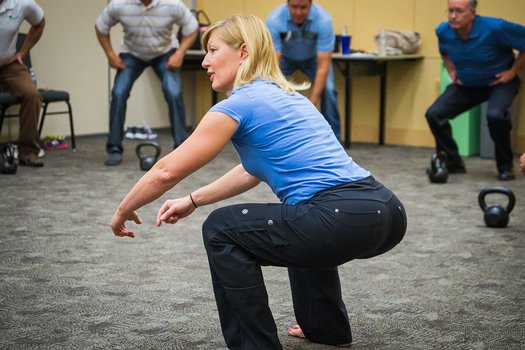
It’s cool to see their results, and now some of them are trying to workout a little during their workday. When they lift heavy things at home, they’re using a hip hinge. It’s great to see them apply what they’ve learned and use it in their daily lives. What we do at the gym should apply to real life, otherwise, why do it?
Dragon Door: When did you complete your RKC-II Certification?
Lori Crock: In April of this year in Chicago. Because it was a smaller workshop, all of us were fortunate to receive an incredible amount of personal attention. We reviewed the level one skills, then learned the level two skills and learned how to teach them to our clients. I felt that the
RKC-II was essential for me to grow my business and to keep my clients progressing.
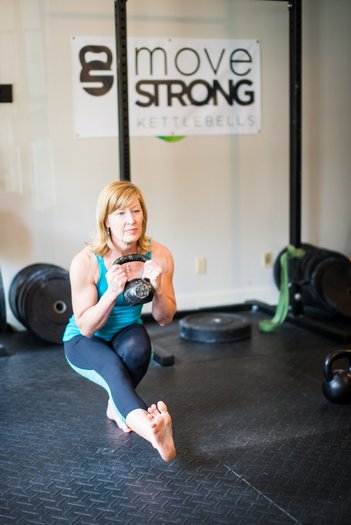 Dragon Door:
Dragon Door: What's your next goal?
Lori Crock: I am training for the
PCC in November. After that, I want to train for the Iron Maiden, but I am not sure if I will ever actually test for it. I feel like at least 2 out of 3 of the movements are doable for me. I like having goals and to challenge my body in different ways. I haven't really focused on the Iron Maiden yet, but want to work on it after the PCC. I am really excited about the PCC; I've been practicing the Century Test and feel great after those last few
Aussie pull-ups. I think of myself as the "human petri dish" because I like to test out everything before using it with my clients.
My number one goal is really to stay injury-free, number two is to continue to grow and learn as a coach. Goal number three is to continue to challenge my body to get stronger. At the age of 52, that’s the best example I can give. Even though I don't have any dramatic athletic accomplishments in my past, I think it’s a big accomplishment to be in the
best physical condition of my life in my fifties. I hope it inspires others to never give up on getting stronger and trying something new.
Dragon Door: What are your small group classes like? Is there a particular approach you use in your training?
Lori Crock: One of my clients’ favorites is "you-go-I-go". We will use it at the end of the session, after completing our mobility work and the workout planned for the day. At that time I’ll throw in a "you-go-I-go" swing drill for teams or individuals, which brings up the energy level and a lot of fun at the end of a session. They might think they’re too tired to do 50-100 swings, but the social and team dynamic of the drill makes it a lot of fun.
I love programming—I love coaching first, but programming is also a favorite activity of mine. I have well over 300 workouts that I've written for past programs.
Dragon Door: What kind of results are your clients getting?
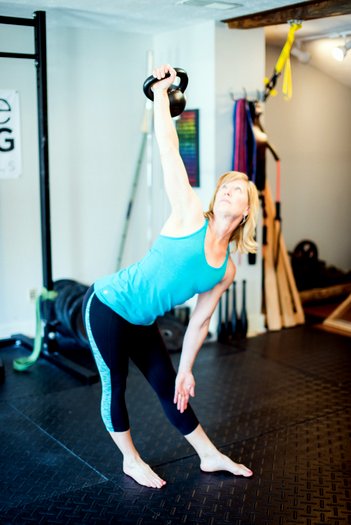 Lori Crock:
Lori Crock: I led a strength and stretching class (they didn’t want to mention weights and kettlebells and scare people off) at a cancer support center. I started out by working on mobility and
flexibility, before adding kettlebells little by little. By the end of the classes they were all in love with the kettlebells. While many of them had very sad stories about their physical challenges, they were very determined. They didn't care what size the kettlebells were, but wanted to learn to get the hip hinge, press a kettlebell, or do a sumo deadlift. They loved telling me how they applied what they learned in their daily life. That was personally rewarding.
I am able to relate to my clients who are mostly regular people like me. They feel comfortable with me, even if they have been inactive for a long time. And it’s not about me—that's what’s great about this business and kettlebells—it's about the clients! I love Dragon Door's goal of making us good coaches and teachers first. It’s not about our own athletic accomplishments; it’s about what we can do to help others achieve their goals.
At a city employee workshop where participants were encouraged to introduce themselves and name a sport they were into, a woman from one of my city employee classes introduced herself as "a kettlebell athlete." After just three months of using
kettlebells and using many of the RKC stretches, she has beautiful kettlebell form, her FMS score went from a 10 to a 17, and she’s pain-free. That's a pretty dramatic result.
Back